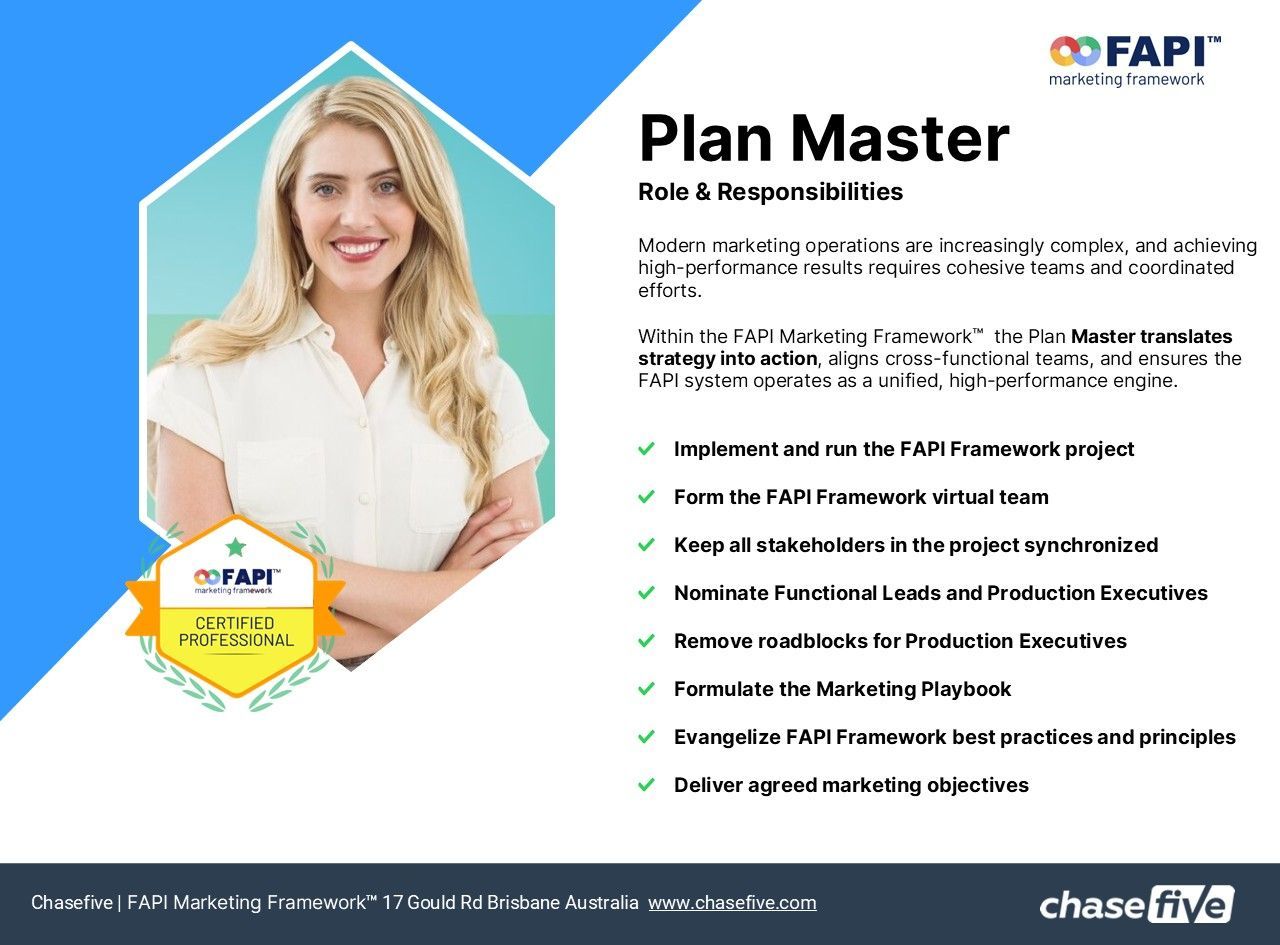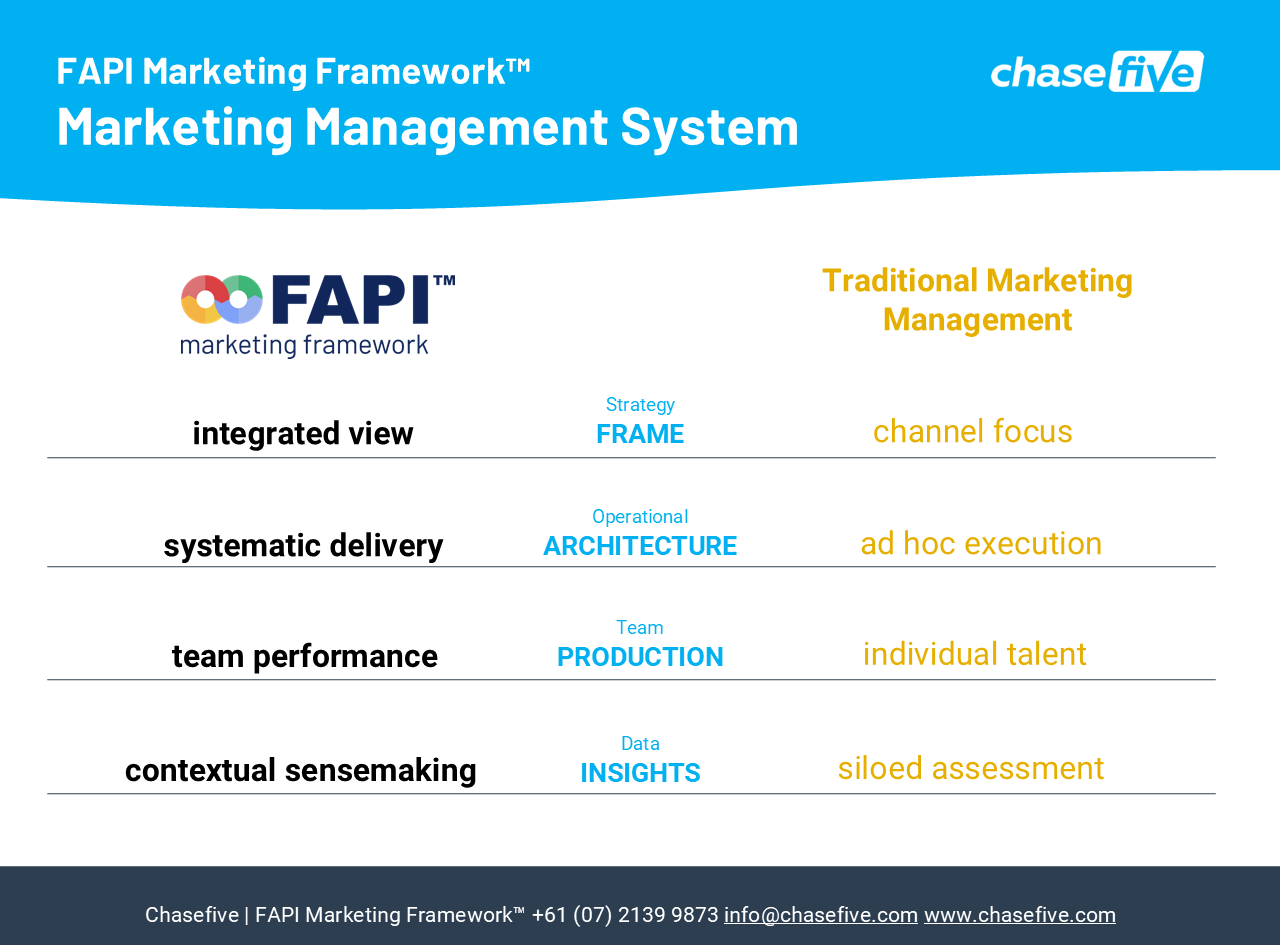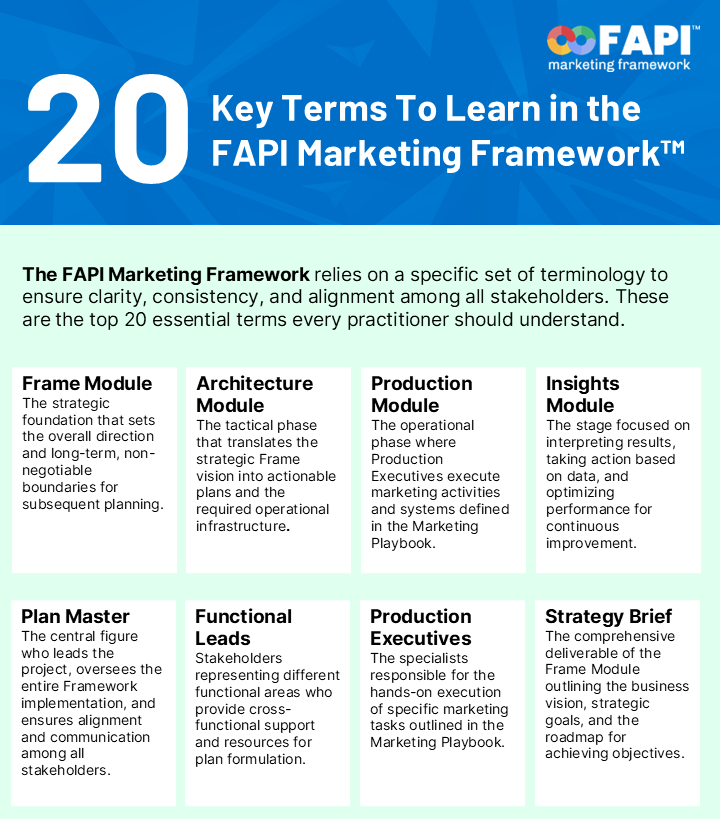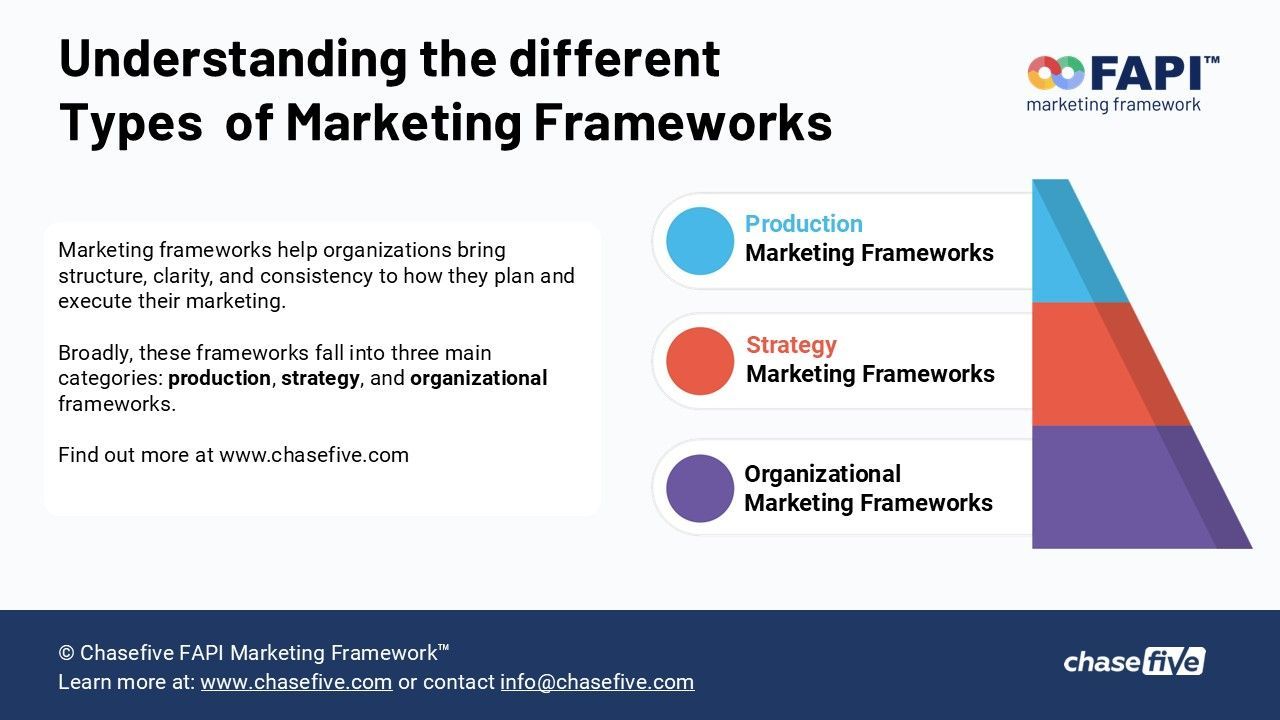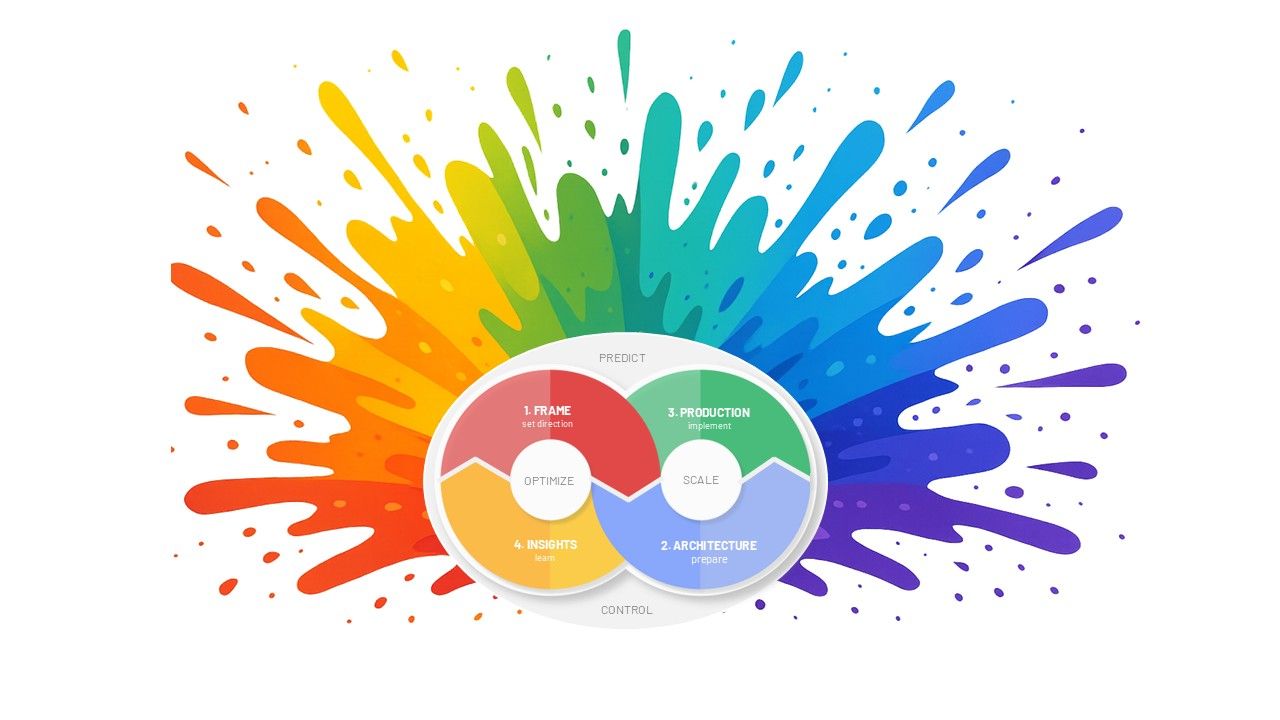How the FAPI marketing framework enables marketing leaders to instill a performance driven culture in their teams
In the current competitive business environment, it is more important than ever to be effective in marketing. To ensure that their marketing efforts align with strategic goals and yield measurable results, companies require a structured approach. The FAPI Marketing Framework, created by Chasefive, offers a robust solution.
The FAPI Marketing Framework™ is a comprehensive marketing planning and management methodology crafted to guide managers through the process of organizing and building highly effective marketing functions in companies of all sizes. The framework comprises four crucial modules, namely Frame, Architecture, Production, and Insights. It aims to equip marketing professionals with the tools and knowledge to unlock the full potential of their marketing departments and achieve exceptional results. Moreover, there is a professional certification program available to improve marketing competence through the FAPI Marketing Framework.
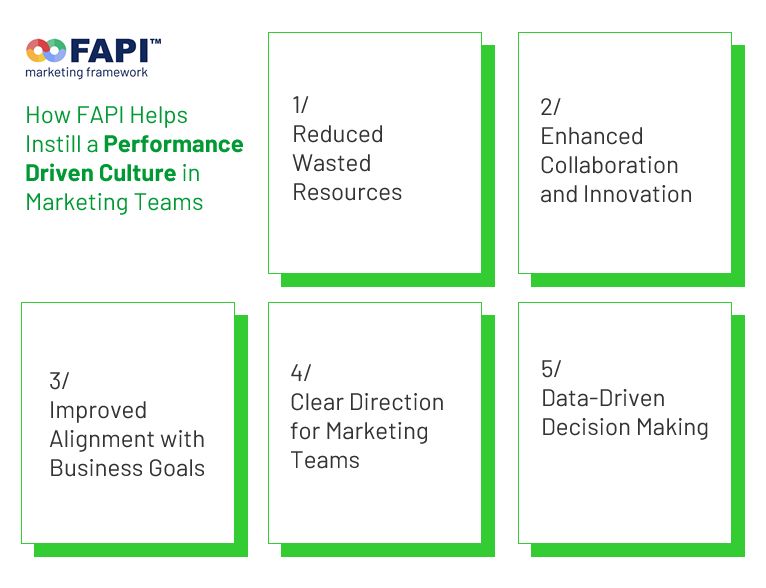
A well-planned marketing strategy is essential for the success of any business. The FAPI Marketing Framework™ is a powerful tool that can help companies improve their marketing efforts, align them with their overall business goals, and achieve exceptional results. By deploying this framework, organizations can create a more structured approach to marketing management, leading to greater efficiency, effectiveness, and collaboration among team members. It can also help organizations make better use of their marketing investments and develop a more data-driven marketing culture. In this article, we explore the benefits that the FAPI Marketing Framework™ can offer to organizations seeking to revolutionize their marketing efforts.
By following the FAPI Marketing Framework, marketing teams can instill practices that demonstrably drive performance. Here's how:
- Reduced Wasted Resources: FAPI's emphasis on goal setting and clear direction helps marketing teams avoid scattered efforts and wasted resources. By focusing on initiatives directly tied to strategic objectives, marketing spend becomes more efficient.
- Enhanced Collaboration and Innovation: The framework fosters a collaborative environment where everyone understands their role and how it contributes to the team's success. This open communication structure can spark innovation and lead to the development of more effective marketing strategies.
- Improved Alignment with Business Goals: FAPI ensures marketing activities are not siloed operations but directly aligned with the overall business strategy. By clearly defining marketing goals within the framework of the larger business objectives, marketing efforts become a driving force for company growth.
- Clear Direction for Marketing Teams: The framework provides a roadmap for marketing teams, outlining the steps needed to achieve success. This clarity empowers teams to take ownership of their work and strive for continuous improvement.
- Data-Driven Decision Making: By emphasizing data analysis in the Insights stage, FAPI encourages data-driven decision making. Marketers can leverage data to measure the effectiveness of campaigns, identify areas for improvement, and optimize future efforts for maximum performance.
Conclusion
The FAPI Marketing Framework offers a structured approach to marketing planning and management. By following its principles, companies can instill marketing practices that drive performance, improve efficiency, and achieve strategic goals. If you're looking to optimize your marketing efforts and achieve measurable results, consider implementing the FAPI framework within your organization.
